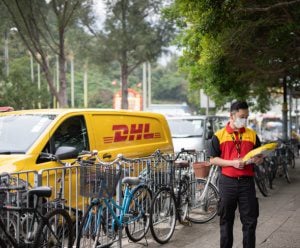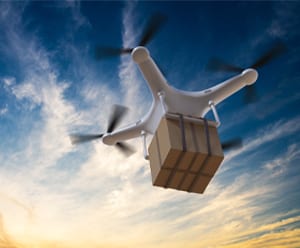
Revolutionizing last-mile logistics with autonomous vehicles

To the average consumer, delivery is a straightforward process – just get a product from the manufacturer to customers’ doorsteps. How hard could it be? Well, it certainly is not easy.
Last-mile deliveries are widely known to be a challenge for many logistics companies. The many factors in play – such as fueling logistics, traffic congestion, and route changes – leave them with little control.
Labor shortages in the transport and logistics sector have also exacerbated the situation, with job vacancy rates in Singapore jumping to 2.4 times higher than pre-pandemic levels.
Solutions such as parcel lockers, optimized route planning, and even automated dispatches have been proposed to address such problems. However, one idea in particular has the potential to revolutionize the landscape – autonomous vehicles (AV).
The beneficial autonomous future
McKinsey & Company estimates that 12 percent of new passenger cars sold by the end of the decade will be equipped with at least environmental detection capabilities and make informed decisions for themselves.
But beyond personal transportation, logistics companies can reap multiple advantages by integrating AVs into their operations.
Autonomous drones can deliver packages to harder-to-reach locations, such as those that lack proper transport infrastructure.
AVs will help drive sustainability. Without any intervention, the number of delivery vehicles in the top 100 cities globally will increase by 36 percent by 2030 to satisfy the growing e-commerce market, according to a 2020 report by the World Economic Forum. Consequently, carbon emissions would see a 32 percent rise.
Finally, deploying AVs will address the industry staffing shortage. Packages will no longer sit in distribution centers for extended periods due to a lack of personnel. Logistics companies will also save on operational costs, and invest the cost-savings in upskilling their existing labor force.
The current reality
With several experiments and test cases already in progress, AVs are starting to prove their mettle in logistics.
In collaboration with freight autonomy startup Clevon, DHL carried out a successful trial of AVs in Estonia when looking to balance costs and improve energy efficiency.
Clevon’s automated robot carriers started conducting public road tests, delivering DHL’s internal packages between its three offices in Tallinn.
Since then, they have been regularly used in DHL’s fleet for delivery to all customers within the region. The new MultiBox top application even enables them to deliver multiple packages in a single route.
As of 30 September 2023, the robots have driven more than 5,000 miles in all weather conditions and delivered over 1,645 parcels without any safety incidents. Weighing only 1,170 lbs (530 kg), they are significantly lighter than traditional delivery trucks, which helps the logistics company to slash its energy consumption.
A long road towards going big
The Clevon trial, however, is just a small-scale example. There is still some way to go for the sector to implement AVs on a large scale.
According to Stanford researchers, work remains to ensure the safety of AVs before widespread deployment in the real world. As recently as October 2023, California ordered automotive company General Motors’ Cruise to remove its driverless cars from roads due to safety risks.
Even when AVs are deemed safe and reliable, manufacturers still face the mammoth task of gaining public acceptance. A 2021 survey conducted by The Pew Research Center found that Americans were more likely to say the widespread use of driverless cars would be harmful for society, rather than good.
With the various roadblocks ahead, AVs may not be a viable solution. However, as technology – the Internet of Things, artificial intelligence, and Big Data – continues to evolve and improve, it has great potential to overcome current hurdles and fix the logistics industry’s last-mile problems.
Together with other solutions that come along the way, the last stages of delivery may no longer give organizations a headache in the future.
ALSO WORTH READING













 English
English